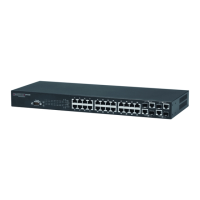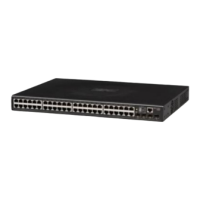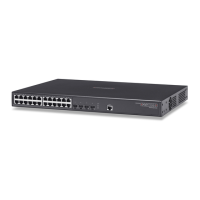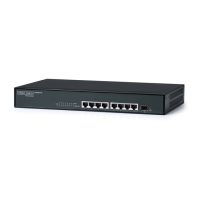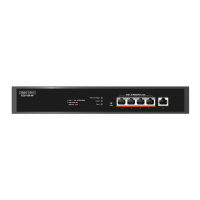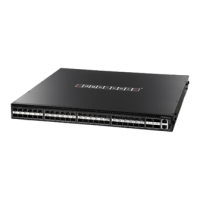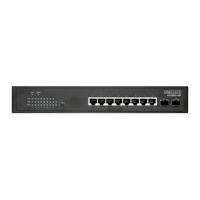C
HAPTER
33
| Spanning Tree Commands
– 805 –
COMMAND USAGE
◆ A bridge with a lower bridge identifier (or same identifier and lower
MAC address) can take over as the root bridge at any time.
◆ When Root Guard is enabled, and the switch receives a superior BPDU
on this port, it is set to the Discarding state until it stops receiving
superior BPDUs for a fixed recovery period. While in the discarding
state, no traffic is forwarded across the port.
◆ Root Guard can be used to ensure that the root bridge is not formed at
a suboptimal location. Root Guard should be enabled on any designated
port connected to low-speed bridges which could potentially overload a
slower link by taking over as the root port and forming a new spanning
tree topology. It could also
be used to form a border around part of the
network where the root bridge is allowed.
◆ When spanning tree is initialized globally on the switch or on an
interface, the switch will wait for 20 seconds to ensure that the
spanning tree has converged before enabling Root Guard.
EXAMPLE
Console(config)#interface ethernet 1/5
Console(config-if)#spanning-tree edge-port
Console(config-if)#spanning-tree root-guard
Console(config-if)#
spanning-tree
spanning-disabled
This command disables the spanning tree algorithm for the specified
interface. Use the no form to re-enable the spanning tree algorithm for the
specified interface.
SYNTAX
[no] spanning-tree spanning-disabled
DEFAULT SETTING
Enabled
COMMAND MODE
Interface Configuration (Ethernet, Port Channel)
EXAMPLE
This example disables the spanning tree algorithm for port 5.
Console(config)#interface ethernet 1/5
Console(config-if)#spanning-tree spanning-disabled
Console(config-if)#

